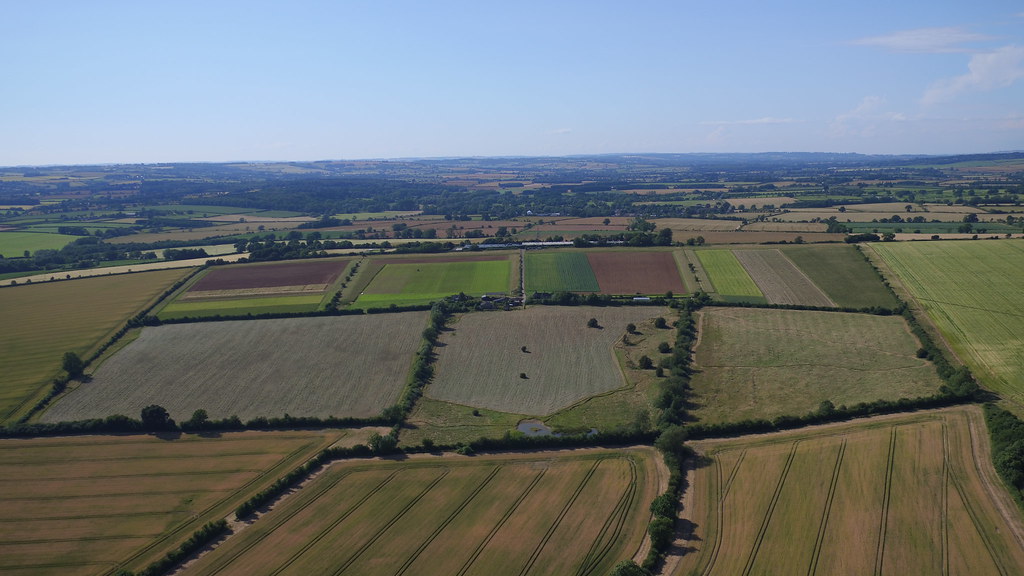Honeydale History with Jim & Wendy Pearse
‘When I was a young boy, riding on the tractor with my dad, I found it fascinating to watch the soil moving through the plough and the harrows. That’s all I wanted to do,’ recalls Jim Pearse, who farmed Honeydale from the 1950s until 2013, when he retired and passed the baton to Ian Wilkinson.
It’s this focus on the soil that has underpinned his life as a farmer. ‘Jim’s real incentive was always to look after the land, for the future,’ his wife Wendy explained.
This is very much Ian Wilkinson’s incentive too, and while farming methods have undergone considerable changes since Jim’s early days, his intimate knowledge of these particular fields in West Oxfordshire have proved invaluable to Ian and the rest of the team from Cotswold Seeds, who now own and manage Honeydale.
Honeydale was once part of the larger Coldstone Farm which stretched right up the Charlbury Road and encompassed College Farm, which Jim’s relations were farming back in the 1600s. When Jim’s parents had to leave Coldstone they bought the highest and best part of it - the 107 acres that now make up Honeydale. There were no buildings, so for a while Jim, his sister and parents, lived in a caravan.
‘We wondered what to call our new farm,’ recalls Jim. ‘Many farms are named after the biggest field and our biggest, on the right as you look towards Ascott, has been called Honeydale since at least the 1500s.’ Again this is all about the soil. ‘It’s such a romantic name because it’s describing the land. A sticky yellow clay, just like honey,’ Jim recalls.
The old names of the fields are also reflected in Ian’s present day plans for the farm. Withy Slade takes it’s name from withies or willows which grow beside streams and before enclosure in 1838 Withy Slade Ditch meandered through this field. It was rerouted to follow the line of the new hedge, and Jim’s Aunt told him how it was ‘all switch and quagmire’ before Jim took it on. But Ian has allowed the stream to return to its original course where it now forms part of the natural flood management works.
Jim has an endless supply of such observations and stories.
He recalls how his father told him that Honeydale field was ploughed up in the war whereas Plum Tree field was too uneven. ‘We couldn’t chain harrow it but rolled it sometimes.’ Withy Slade field displays straight ridge and furrow which were probably made by steam ploughs.
When it was part of Coldstone, Withy Slade was always mown for hay every year, and then cattle were put in afterwards. Back in 1930s up to 1950s there was a problem with couch grass which Jim managed with bare fallow, ploughing four times to dry and kill the roots.
Jim farmed Honeydale with his father until his dad retired in 1974. Then Jim bought a milking machine and increased the number of cows to 23, which produced manure four foot deep. He also planted tetraploid red clover with ryegrass, which he says ‘grew like mad’ and produced five leafed clover. ‘Every year it snowed after we planted that grass,’ Jim recalls. They were regularly snowed in for three weeks during the 1980s.
The only fertiliser he used was the muck from the animals, his own livestock and the pigs from the farm across the road. He operated a five year rotation. The red clover and ryegrass, or bare fallow, then wheat, then oats and two crops of barley. The clover was cut in June for hay, then again in August or September, but if it was too wet it was ploughed in to increase soil fertility.
Jim stopped milking in 1988, continuing with beef calves, but in 2004 he had to give them up because he suffered from bad knees. ‘But what do you do with a grass field if you have no animals?’ Jim asks. His solution was to let out the field to a neighbouring farmer to graze his herd of twenty cows over the summer, a forerunner to what Ian is now doing with Nigel and Ed Adams and their sheep. The arable fields were simplified too, just growing barley each year which went straight down the road to FWP Matthews Mill.
Jim returns to his favourite subject: the soil.
He remembers a field of wheat that was swamped with blackgrass which he destroyed with cultivation rather than spraying. ‘At one stage everyone was spraying everything all the time, but I don’t agree with that.’ Weed seedlings and black grass were ploughed again at Christmas time, to get rid of seedlings. ‘The old way of ploughing twice worked, and we didn’t need to keep spraying it. Frost and weather take care of it for you, settle down the soil and make it perfect for ploughing in March. You can’t get a seed bed like that without using frost and weather. Soil is so important. That’s why we went to all the trouble with the cultivations to keep the soil good.
I do miss riding up and down the fields on the tractor doing the ploughing and taking in the view,’ says Jim. But the cottage where he and Wendy now live has a view of Honeydale from the garden, so they can still keep an eye on us!
.png)












0 comments: